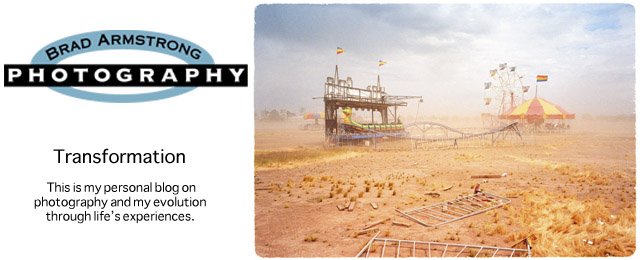


This is a series of landscape photographs I made using Polaroid Type 55. As you may know Polaroid is no longer in production. What this means to use, is that this film has gone the way of the dinosaur. It's now extinct except for those wise men and women who have the financial resources to stock pile the film when it's discontinuance was announced. The challenge with stock piling this film is when it gets old the developer / stabilizer built into the individual film packs dry out. This renders the film useless. I have a box and a half that I would like to shoot but I'm a little pessimistic if it's still good.
Polaroid Type 55, was extremely popular with photographer's in just about ever application from architecture, portraiture, fine art, landscape, editorial and commercial work. It was an alternative creative medium for photographers. Polaroid Type 55, added one more tool to the photographers tool box that helped make their images stand out.
Locally, in Arizona, ASU Regent Professor and fine art photographer Mark Klett used Polaroid Type 55 as his signature look. Google his name and check out his work when you have time. His list of articles, exhibits and achievements are extensive. His early works using Polaroid Type 55 helped make him an icon in the fine art world.
If you're not familiar with the 4 X 5 inch film it has two properties. A positive and a negative. It produced a positive image on a piece of 4 X 5 inch Polaroid paper. We're all familiar with a Polaroid positive but this film also produced a negative. So, when you took the picture you had both, a positive and a negative. With diligence you soaked the negative in Sodium Sulfite and rinsed the developer off of the film. What you ended up with was a fine grain 4 X 5 inch negative. You could then put the negative into an enlarger and make beautiful prints of any size. Today, most people scan but there are still people who love the analog way of wet printing in a darkroom.
This post shows one scene, the Polaroid Positive (left) next to the (scanned) negative on the right. The positive was a great way to proof your composition and exposure much like a LCD screen on the back of your DSLR camera of today.
The bottom image is traditional 4 X 5 inch black and white film processed then scanned on my scanner. In this case it's Kodak T-Max 100 4 X 5 negative film. This film is still in production and available at most professional camera stores.

1 comment:
What a great post! I love seeing work done with medium of a bygone era, and the nuances that just can't be created any other way. I still dream about someday building a darkroom in my home. It's how I learned the craft ,and I will always have a special memory of watching under red lights an image magically emerge from blank paper in the chemical bath.
Post a Comment